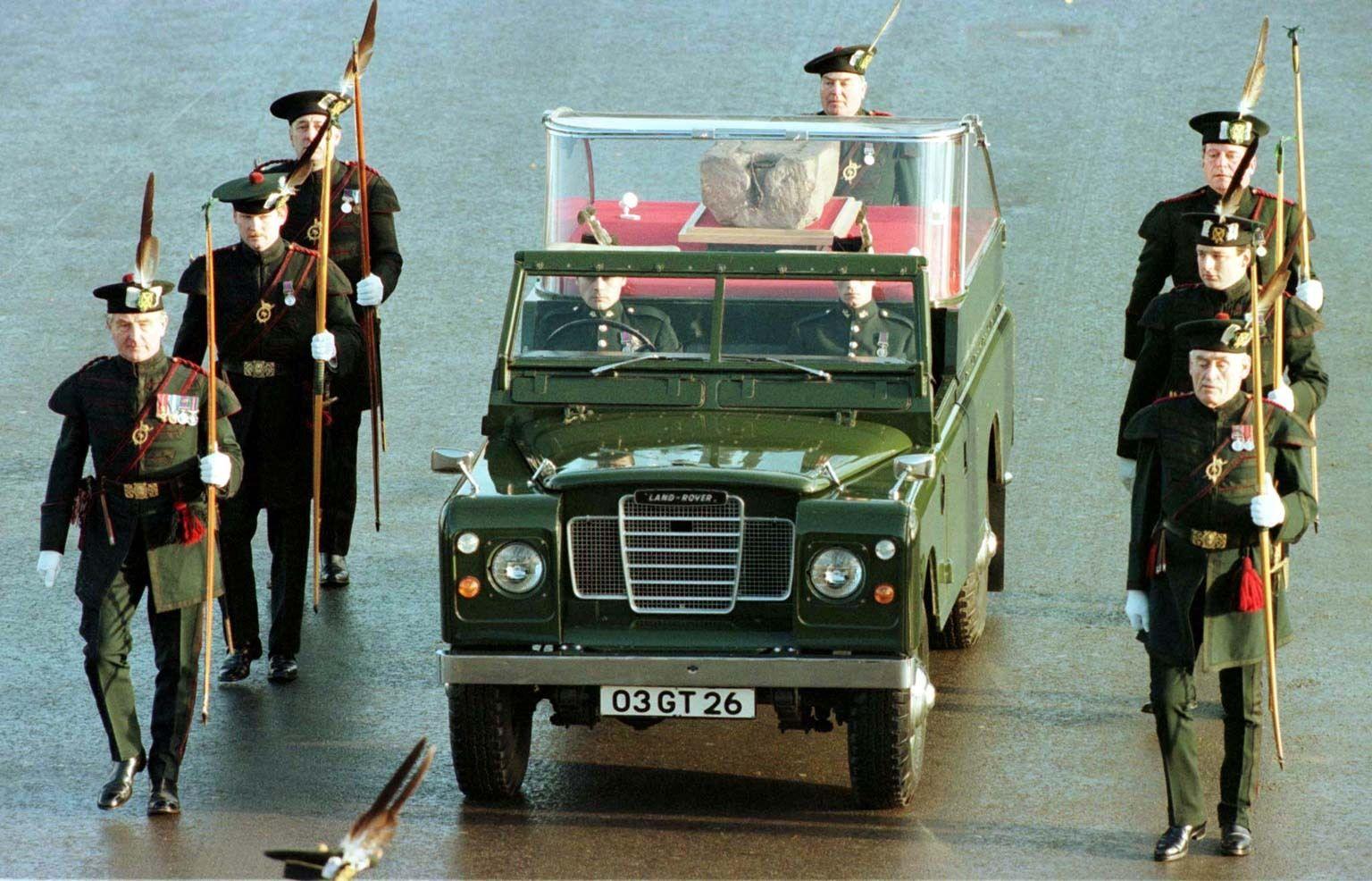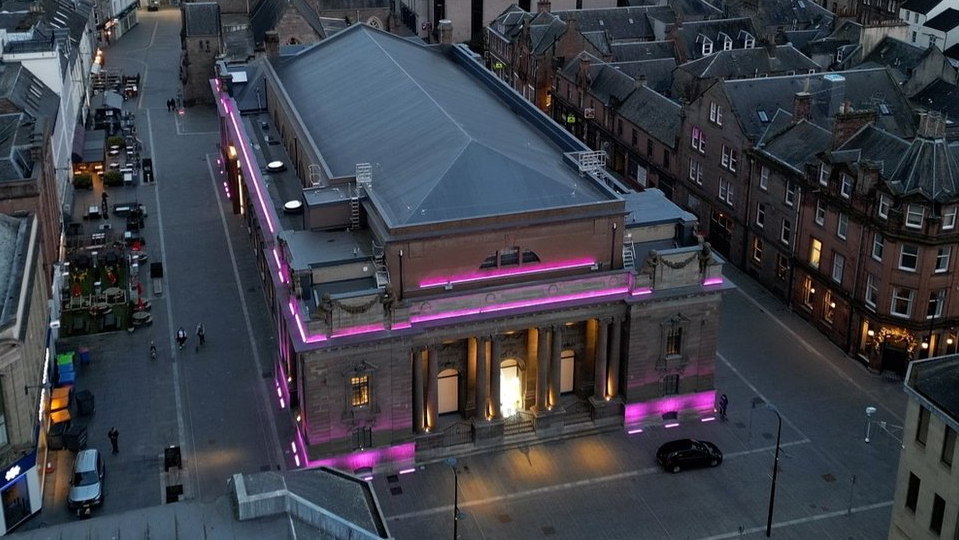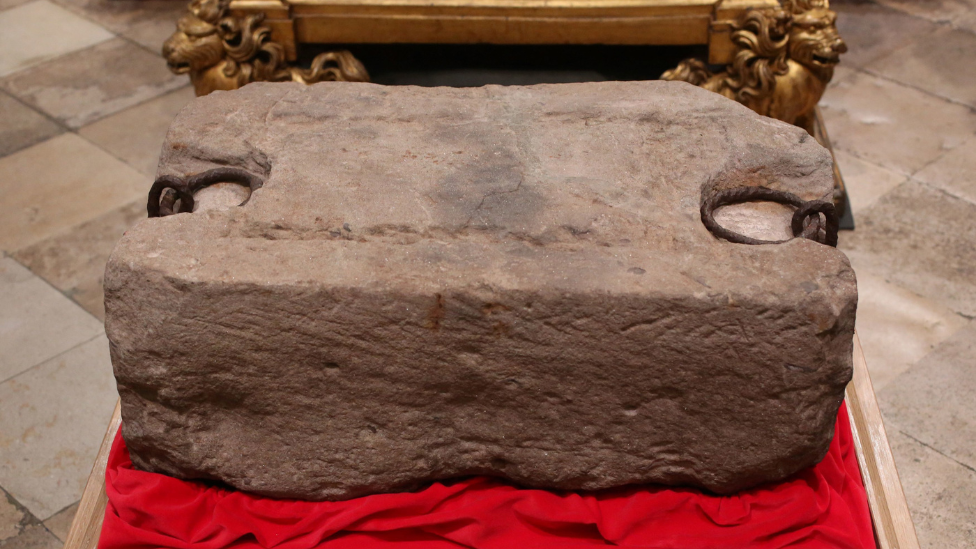Stone of Destiny fragment 'genuine beyond reasonable doubt'
Stone of Destiny returns to Perthshire after centuries away
- Published
A fragment of rock described as a missing part of the Stone of Destiny is genuine "beyond reasonable doubt", according to Historic Environment Scotland (HES).
The chip had been held in storage by the SNP after being gifted to former First Minister Alex Salmond in 2008.
HES has now carried out a series of scientific tests on it on behalf of the Commissioners for the Safeguarding of the Regalia.
These have concluded that "from a scientific perspective, there is a high degree of certainty" that it was taken from the Stone - which was used in the coronation of Scottish kings until the 13th Century.
The Commissioners said the family connection of the person who gifted the fragment to Mr Salmond further pointed to it being genuine.
It will now be retained by the Commissioners "on behalf of the Nation and the people of Scotland".

The Stone was officially returned to Scotland in 1996, 46 years after it was taken from Westminster Abbey by a group of students
A decision on its future home - including the option of displaying it alongside the Stone of Destiny at Perth Museum - will be taken at a later date.
The Stone, also known as the Stone of Scone, was used as the coronation location for Scottish kings until it was seized and taken to Westminster Abbey by King Edward I of England in 1296 during the wars of independence.
Then in 1950, four students broke into Westminster Abbey on Christmas Day and stole the stone so they could "repatriate" it to Scotland.
The group were funded and backed by SNP co-founder John MacCormick.
It was found, covered with a saltire, on the high altar at the ruined Arbroath Abbey in 1951, months after it was taken from Westminster Abbey.
It was taken back to London and stayed there until being officially returned to Scotland in 1996.

The Stone of Destiny is housed in the new Perth Museum
According to Scottish Cabinet papers released on 1 January, it was John MacCormick's son, Prof Sir Neil MacCormick, who presented Alex Salmond with the fragment of the stone back in 2008.
Mr Salmond, who was first minister from 2007 until 2014, said the fragment was handed to the SNP for safekeeping after he had "checked" with Historic Scotland that it was not wanted in the public collection.
However, the public body said it had "no records" of that check taking place.
The UK government's Scottish Secretary, Alister Jack, and his predecessor Michael Forsyth said Mr Salmond should not have accepted the gift in the first place, and called for it to be put on display alongside the rest of the stone.
Scottish Conservative MSP Murdo Fraser said it was one of Scotland's most important cultural artefacts and should not be kept in a cupboard in an SNP office.
What is the Stone of Destiny?
The Stone of Destiny is regarded as one of Scotland's most important cultural artefacts because it was used as the coronation seat for Scottish monarchs for more than 700 years before being stolen by England's Edward I in the late 13th century.
It remained south of the border for 654 years, during which time it was built into the base of a chair on which various English and British monarchs were crowned.
How Scotland's Stone of Destiny was snatched from Westminster Abbey
On Christmas Day 1950, a group of four Scottish students stole the stone from Westminster Abbey, with plans to repatriate it to Scotland.
It was found at the ruined Arbroath Abbey the following year.
From there, it was returned to London where it remained until 1996, when it was sent back to be put on display in Edinburgh Castle.
It has remained there ever since bar a brief sojourn back to Westminster Abbey for the coronation of King Charles III.
The stone was moved from Edinburgh Castle to the new museum in Perth when it opened in March.
But some have questioned if the current stone is the original.
Legend suggests monks at the monastery threw the original in the River Tay to prevent English soldiers getting their hands on it.
Other stories allege copies were made in 1950 and the one now in Perth is fake.
- Published8 January 2024

- Published28 March 2024
